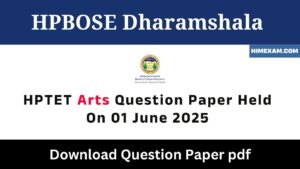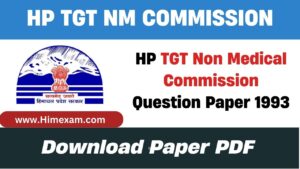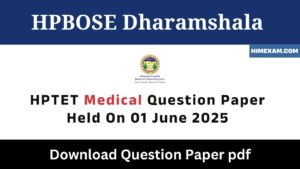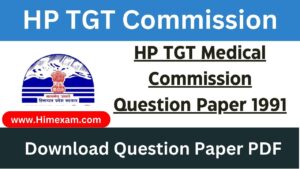Educational Development in Modern India MCQ Question Answer
||Educational Development in Modern India MCQ Question Answer||Educational Development in Modern India MCQ Question Answer in English||
1. Who founded First Sanskrit Mahavidyalaya at Varanasi?
(A) Jonathan Duncan
(B) Warren Hastings
(C) Lorel Macaulay
(D) Bankim Chandra
2. Who among the following was offered membership of the Royal Asiatic Society of Paris?
(A) Dadabhai Naoroji
(B) Michael Madhusudan Dutta
(C) Raja Ram Mohan Roy
(D) Vivekanand
3. Where was the first Madarsa set up by British in India?
(A) Madras
(B) Bombay
(C) Aligarh
(D) Calcutta
4. The Asiatic Society of Bengal was founded by
(A) Sir William Jones
(B) Wilkins
(C) Maz Muller
(D) James Prinsep
5. Who amongst the following Englishmen, first translated BhagavadGita into English?
(A) William Jones
(B) Charles Wilkins
(C) Alexander Cunningham
(D) John Marshall
6. Who among the following was the first to translate Kalidasa’s famous work ‘Shakuntala’ into English?
(A) Charles Wilkins
(B) Henry Colebrooke
(C) Johana Wolfgang von Goethe
(D) Sir William Jones
7. The main reason for the British Government to spread modern education in India during preindependence period was
(A) The need for educated Indians in minor https://himexam.com/wp-content/uploads/2021/12/Madhya-Pradesh-MP-PEB-Group-2-Sub-Group-4-Various-Post-Answer-Key-2021.jpgistrative posts
(B) To promote Indian culture
(C) To modernize the Indian people so that they could share their political responsibilities
(D) None of the above
8. Which Act of British Government granted rupees One lakh for education in India for the first time?
(A) Wood’s Dispatch, 1854
(B) Charter Act, 1813
(C) Charter Act, 1853
(D) Indian Council Act, 1892
||Educational Development in Modern India MCQ Question Answer||Educational Development in Modern India MCQ Question Answer in English||
9. Charles Wood’s Despatch was related with which of the following?
(A) Education
(B) Trade
(C) Administrative Reforms
(D) Military Reforms
10. In the Hunter Commission report, special emphasis was laid on the development of
(A) Girls education
(B) Higher education
(C) Primary education
(D) Technical education
11. When was the National Council of Education established?
(A) 15th August, 1903
(B) 15th August, 1904
(C) 15th August, 1905
(D) 15th August, 1906
12. Sadler Commission was related to
(A) Judiciary
(B) Revenue Administration
(C) Education
(D) Police Administration
13. When did the British Government appoint Sadler University Commission for reforms in education?
(A) 1919
(B) 1917
(C) 1921
(D) 1896
14. Lord Macaulay was related to
(A) Military reforms
(B) Abolishment of Sati
(C) English education
(D) Permanent settlement
15. During India’s colonial period, the theory of downward filtration was related to
(A) Railways
(B) Education
(C) Irrigation
(D) Poverty alleviation
16. The propounder of ‘Filtration Theory’ in India’s education policy was
(A) Charles Wood
(B) Macaulay
(C) J.S. Mill
(D) Cornwallis
17. The foundation of modern educational system in India was laid by
(A) The Charter Act of 1813
(B) Macaulay’s Minutes of 1835
(C) The Hunter Commission of 1882
(D) Woods Dispatch of 1854
18. In whose reign was English Education introduced in India?
(A) Lord William Cavendish Bentinck
(B) Lord Hardinge
(C) Lord Minto
(D) Lord Dalhousie
||Educational Development in Modern India MCQ Question Answer||Educational Development in Modern India MCQ Question Answer in English||
19. The first three universities in India (Calcutta, Madras and Bombay) were established in which year?
(A) 1857
(B) 1881
(C) 1885
(D) 1905
20. The establishment of the first Women’s University in Mumbai was the result of the effort of
(A) Dayaram Gindumal
(B) D.K. Karve
(C) M.G. Ranade
(D) Ramabai
21. Who was associated with the formation of the Deccan Educational Society?
(A) Justice Ranade
(B) Firoz Shah Mehta
(C) B.G. Tilak
(D) Dayananda Saraswati
22. Which of the following was established first?
(A) Hindu College, Calcutta
(B) Delhi College
(C) Mayo College
(D) Muslim-Anglo Oriented College
23. In collaboration with David Hare and Alexander Duff, who of the following established Hindu College at Calcutta?
(A) Henry Louis Vivian Derozio
(B) Ishwar Chandra Vidyasagar
(C) Keshab Chandra Sen
(D) Raja Ram Mohan Roy
24. Who one of the following had vigorously advocated for religious education in the Indian Universities?
(A) Bal Gangadhar Tilak
(B) Swami Vivekanand
(C) Mahatma Gandhi
(D) Madan Mohan Malviya
25. Who was the following laid the foundation stone of Banaras Hindu University?
(A) Madan Mohan Malviya
(B) Maharaja Vibhuti Narain Singh
(C) Lord Hardinge
(D) Annie Besant
26. Which one of the following was the first to be declared as Central University?
(A) Aligarh Muslim University, Aligarh
(B) Dr. Bhimrao Ambedkar University, Lucknow
(C) Banaras Hindu University of Varanasi
(D) University of Allahabad
||Educational Development in Modern India MCQ Question Answer||Educational Development in Modern India MCQ Question Answer in English||
Answer Sheet1. (A) 2. (B) 3. (D) 4. (A) 5. (B) 6. (D) 7. (A) 8. (B) 9. (A) 10. (C) 11. (D) 12. (C) 13. (B) 14. (C) 15. (B) 16. (B) 17. (B) 18. (A) 19. (A) 20. (B) 21. (C) 22. (A) 23. (D) 24. (D) 25. (C) 26. (C)
Read More: – Himachal Pradesh General Knowledge

.png)







